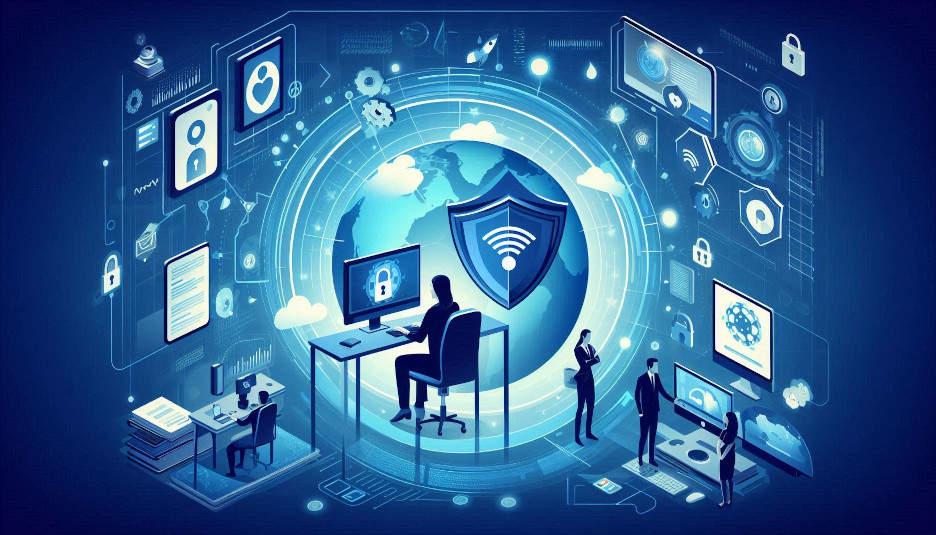Cybersecurity in the Remote Work Era
-
 John Fry
John Fry - 11 Jun, 2024

Cybersecurity in the Remote Work Era
The rise of remote work has revolutionized the way we work, offering flexibility and convenience. However, it has also introduced new cybersecurity challenges. As more organizations embrace remote work, it’s imperative to prioritize cybersecurity to protect sensitive data and prevent breaches.
The Remote Work Revolution
Remote work has numerous benefits, including:
- Increased Flexibility and Productivity: Employees can work from anywhere, leading to improved work-life balance and productivity.
- Reduced Overhead Costs: Companies can save on office space and operational costs.
- Expanded Talent Pool: Organizations can hire talent from anywhere in the world, without geographical constraints.
However, remote work also presents unique security challenges:
- Increased Security Risks: Remote devices are more susceptible to attacks as they are often less secure than corporate networks.
- Difficulty in Maintaining a Secure Work Environment: Remote employees may not have the same level of security controls as in-office workers.
Cybersecurity Challenges in Remote Work
To effectively address the security challenges of remote work, organizations must focus on the following areas:
Device Security:
- Strong Password Policies: Enforce strong, unique passwords for all devices.
- Multi-Factor Authentication (MFA): Implement MFA to add an extra layer of security.
- Regular Software Updates: Keep devices and software up-to-date with the latest security patches.
Network Security:
- Secure Remote Access: Use robust VPN solutions to encrypt data transmitted over the internet.
- Firewall Protection: Implement firewalls to protect devices from unauthorized access.
- Phishing and Malware Prevention: Educate employees about phishing attacks and use security software to detect and block malware.
Data Security:
- Data Encryption: Encrypt sensitive data both at rest and in transit.
- Data Loss Prevention (DLP): Implement DLP solutions to prevent unauthorized data transfer.
- Regular Backups: Regularly back up important data to prevent data loss in case of a cyberattack.
Best Practices for Remote Work Security
To ensure the security of remote work environments, organizations should:
- Employee Training and Awareness: Conduct regular security awareness training to educate employees about best practices.
- Strong Password Policies: Enforce strong, unique passwords and encourage the use of password managers.
- Secure Remote Access: Implement robust VPN solutions to secure remote connections.
- Regular Security Audits and Assessments: Conduct regular security assessments to identify and address vulnerabilities.
- Incident Response Planning: Develop and test a comprehensive incident response plan.
By adopting these best practices, organizations can mitigate the risks associated with remote work and protect their sensitive data. As the remote work landscape continues to evolve, it’s essential to stay informed about the latest security threats and best practices to ensure the security of your organization.


